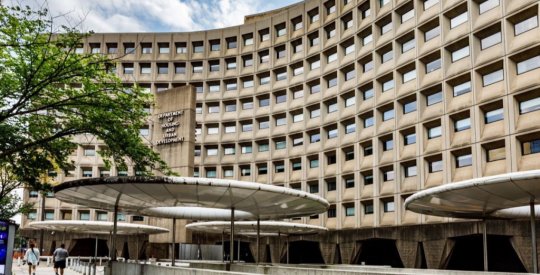JP Morgan Chase & Co. (JPM) became the latest large lender to launch an aggressive loan modification plan on Friday, saying it would look to implement a “mass mod” program while voluntarily enacting a foreclosure moratorium on loans it owns in an effort to qualify existing troubled borrowers for the new, expanded program. “It doesn’t make sense for us to wait” to tackle the problem, said Charles Scharf, an executive at the firm, according to the Wall Street Journal. The modifications will impact as many as 400,000 borrowers, JP Morgan said in a press statement, or roughly $70 billion in mortgages — and good chunk of that total is likely to focus on the $54 billion in option ARMs that JP Morgan inherited as part of its recent takeover of failed thrift Washington Mutual. JP Morgan said it would open regional counseling centers, hire additional loan counselors, introduce new financing alternatives, and proactively reach out to borrowers to offer pre-qualified modifications — a la the Federal Deposit Insurance Corp. and IndyMac Federal Bank — and commence a new process to independently review each loan before moving it into the foreclosure process. It was unclear exactly what that process would be at the time this story was published, or what standards the workout plan would offer to troubled borrowers. The expanded plan will, however, only apply to owner-occupied properties with mortgages owned by Chase, WaMu or EMC — or to those instances where JPM can obtain investor approval; the banking giant said it would “work diligently with investors” in an attempt to help homeowners. JP Morgan becomes the third major bank to garner press for a relatively vague pronouncement of mass modifications, and an associated freeze in foreclosures. The FDIC kicked off the loan modification party in August by announcing a plan to refinance troubled homeowners into “affordable” mortgages; Bank of America Corp. (BAC), saddled with legal pressure tied to its Countrywide unit, later announced its own $8.4 billion loan modification program/settlement in early October, which is also expected to target 400,000 borrowers. Chase officials stressed in various press reports that the program came not in response to pressure from consumer groups or the government, but in response to its own desire to limit losses — particularly on the toxic loans it now owns as a result of its takeovers of both WaMu and Bear Stearns. More than a few of HW’s sources — while stressing to us that any effort to help keep people in their homes is worth the effort — also suggested that Chase’s move was a well-timed effort to avoid further market regulation surrounding servicing practices. House Financial Services Committee chair Barney Frank, a Massachusetts Democrat, has in the past suggested that Congress will look to regulate servicing practices if progress isn’t made in modifying loans. With reports now surfacing that investors aren’t willing to participate in the recently-legislated Hope for Homeowners — as well as early reports suggesting that lenders are refusing to buy the loans, as well — it’s very possible that JP Morgan is trying to keep ahead of a potential political firestorm over the issue. And, just as been the case with the FDIC’s retention efforts at IndyMac, the jury is still out as to whether the program will be able to yield results. This loss mitigation thing, after all, is difficult to pull off. Write to Kelly Curran at [email protected] and Paul Jackson at [email protected]. Disclosure: The authors held no relevant investment positions when this story was published. Indirect holdings may exist via mutual fund investments. HW reporters and writers follow a strict disclosure policy, the first in the mortgage trade.
Chase Rolls Out Modification Program, Halts Some Foreclosures
Most Popular Articles
Latest Articles
HUD walks back some proposed changes to HECM for Purchase program
Certain changes announced for the H4P program last year will not be implemented after public comments raised concerns, HUD and FHA said.
-
Key housing markets are starting to buck national trends: Redfin
-
Median payment on purchase mortgage applications rises to $2,201: MBA
-
HUD, USDA reach accord on energy-efficiency standard for new construction
-
U.S. mortgage delinquency rates remain near historic lows: CoreLogic
-
HomeServices settles commission lawsuits for $250M



